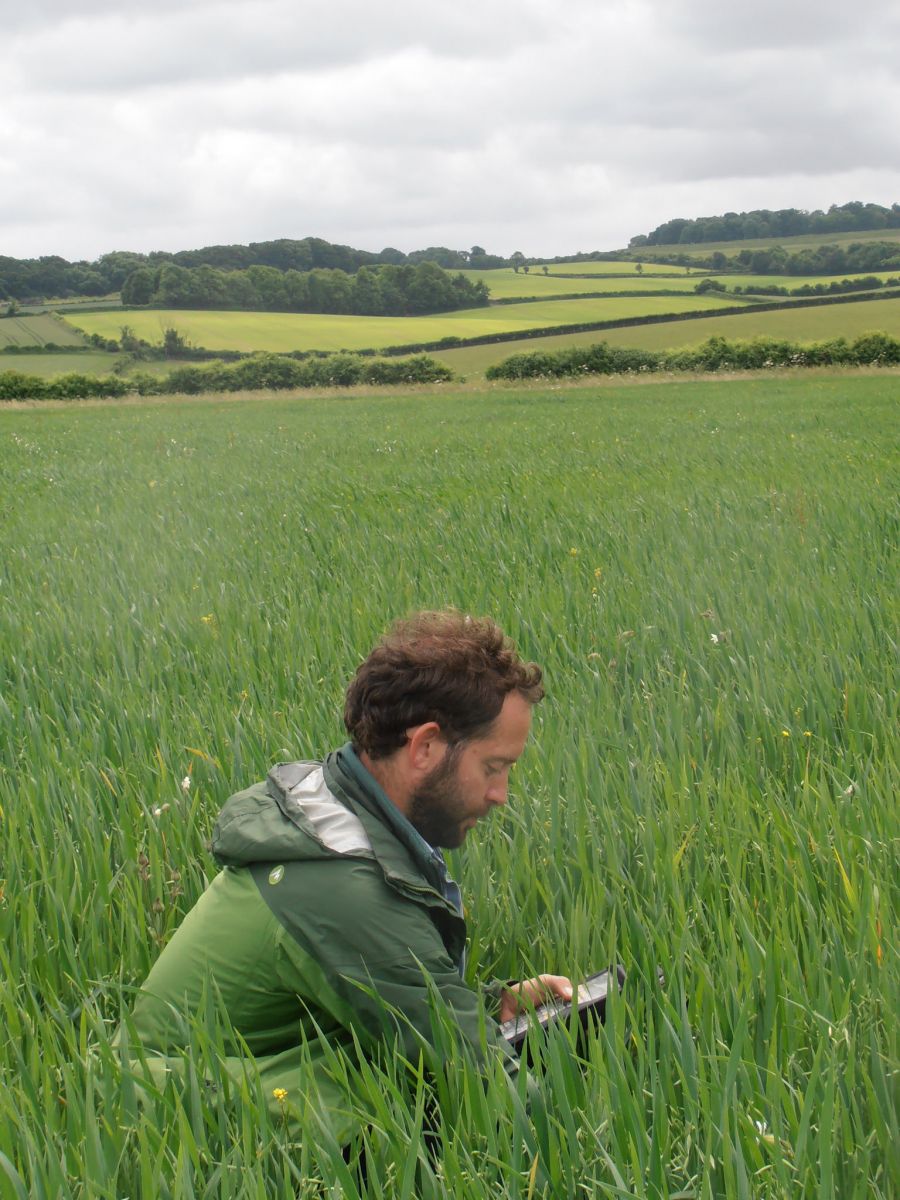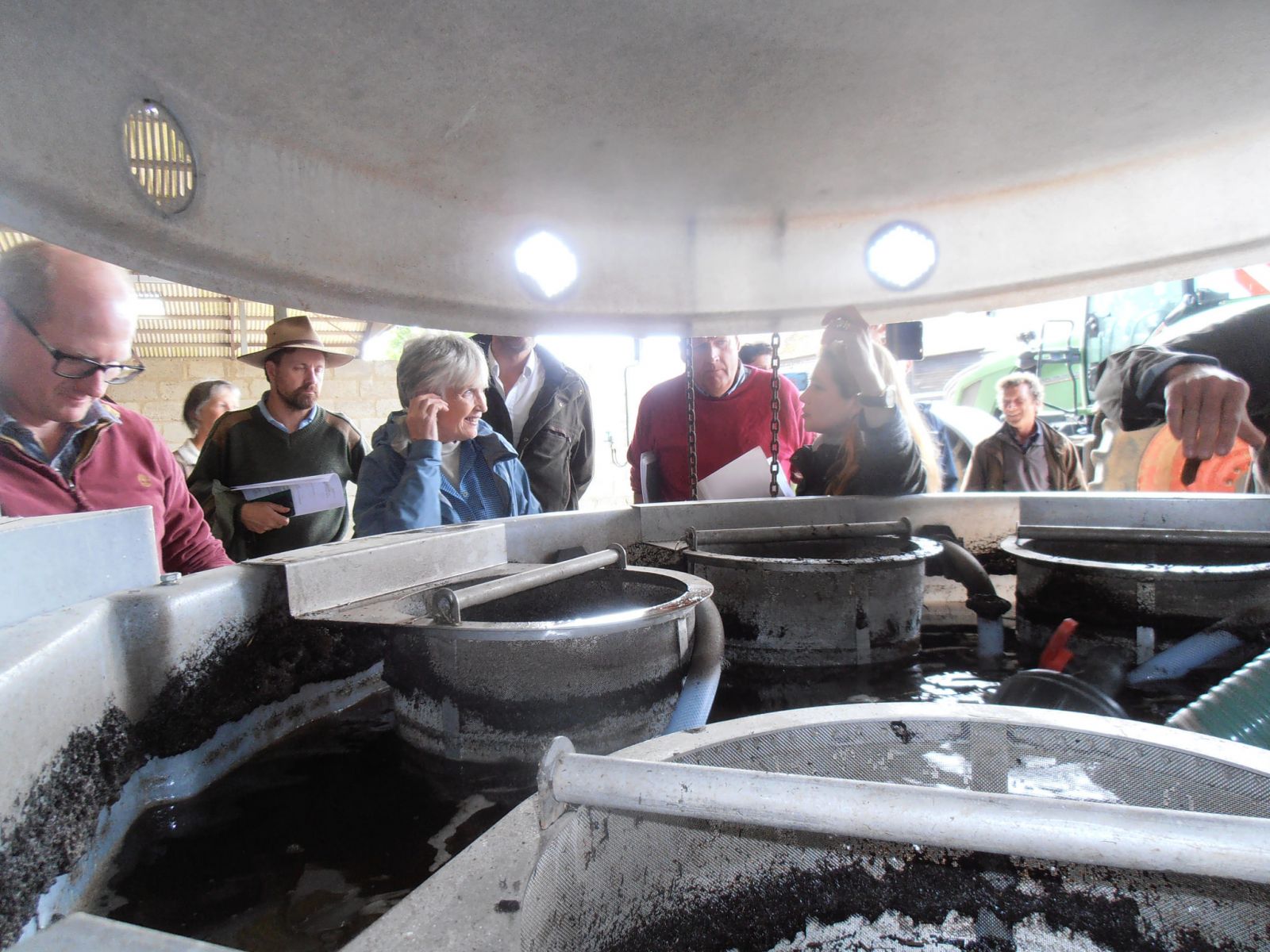Compost tea – a good brew?
Can compost tea be used as an effective way to enhance soil microbiology as a microbial inoculant in an organic arable system?
Compost tea and its use as a microbial inoculant has been the subject of a lot of attention recently and there have been many bold anecdotal claims made about the benefits for crops and soils, but there is very little academic research proving efficacy.
Through the Innovative Farmers research programme and one farmer’s passion to investigate the potential of enhancing the microbiology in her arable fields, compost tea is now being tested on farm to help answer some of the questions surrounding the practice…
The theory…
The basic theory behind the application of compost tea is to increase the amount and diversity of microbes in the soil; enhancing soil biology and activity, helping to remediate microbiological deficiencies, and balancing the ratios of microorganisms. The addition of these beneficial microbes is supposed to increase nutrient availability to the crop and help with disease suppression. The mechanisms by which this takes place are still not well understood but it’s thought to take place through competition with plant pathogens, either in the soil or on the leaf suppressing soil-borne and foliar diseases.
The method…
The method is reasonably simple… Take a small pile of mature compost, add it to a brewer filled with water, oxygenate the water for a period of time (between 24 – 48hrs) in the presence of a catalyst (a food source for the microbes such as molasses or humic acid) and apply using a commercial sprayer; either pre crop emergence as a soil drench, or directly to the crop as a foliar spray. To be clear, I’m talking about aerated compost tea (ACT) here.
What is hoped is that you’re applying a solution full of beneficial aerobic microbes to help enhance the biological function of your soil.
Of course things are a great deal more complicated than that, and a number of issues should be considered including water chemistry and temperature, de-chlorination, compost quality, length of brewing, catalyst choice, and brewer filters… and that’s before applying it. Then comes dilution rate and therefore application rate, nozzle type, spray pressure, timing of application, number of applications, conditions at time of application specific to compost tea (for instance high UV is not helpful), and conditions for spraying more generally such as soil moisture.
Farm trials
The trial at Hemsworth Farm in Dorset, managed by Sophie Alexander is into its third year, and while there were suggestions of improvements to fungal biomass in the soil and to crop yield, bushel weight and even disease suppression (revealed from a microdochium test last autumn), it is not until now that the trials have been properly set up and replicated to help provide evidence of effects with more certainty.

Results
That’s a basic summary of the set up and method but what about the results?
Well, the soils from each plot were analysed using the Soil Foodweb Test (SFW) at three points during the growing season; approximately two weeks after the second, third and fourth application. At the final soil sampling in early June, samples were also sent off to Cranfield University for analysis of microbial biomass (fumigation extraction), phenotypic profile (using phospholipid fatty acid molecular analysis) and activity (basal metabolic rate and substrate (glucose) induced respiration).
The results from both the SFW and Cranfield came back fairly conclusive – no effect on soil biology (biomass, phenotypic profile shift, activity) from compost tea application. What’s yet to be assessed is an effect on the crop, which will only become clear at harvest.
One consequence of using a conventional contract sprayer is the amount of cleaning that needs to take place on an organic farm and therefore the amount of water usage – an issue more relevant this year than most. Unsustainable amounts of water were being used to clean the sprayer as well as making and diluting the brew, which took place four times over the season.
Discussions about how the investigation continues are already taking place, and a second year on the same trial areas could provide a cumulative and possibly a detectable effect. With Cranfield involved, more lab work can be done to look at dose rates and timings, and environmental chambers can be used to provide precision and higher throughput in assessing effects on microbiology.
Questions raised…
One invaluable part of the process this year was to assess the microbiology using SFW to analyse the compost, brew and applied tea. What appears clear is that the brewing process isn’t managing to multiply fungal biomass from the compost, moreover it’s not even producing a 1:1 extraction. Bacteria are being multiplied successfully in the brewer. One of the biggest questions of all is what species of bacteria? Are they beneficial?
Inspecting the compost tea brewer at Hemsworth Farm during Innovative Farmers field lab
The lack of an effect on soil biology in the field this year could be for a myriad of reasons… Was the compost mature enough? Is the brewing method effective? Is the sampling method effective? Were the conditions optimal for application? Does the indigenous microbiology respond? Is there an abiotic barrier in the soil to be overcome?
Is a one year trial long enough to observe effects? Something as simple as sampling depth (10cm this year) could have led to a dilution in the sample of microbial biomass added to the surface of the soil making any increase in biomass undetectable.
It could just be because compost tea isn’t effective at transferring beneficial microorganisms from a pile of compost through a brewer, and a sprayer to an arable field.
Certainly field conditions this year could have played a part with the dry conditions leading to low soil moisture content, potentially unfavourable for the microbes.
Looking ahead
While the scientific literature regarding ACT is a bit thin on the ground, the benefits of adding compost for the soil and the crop are fairly well studied and established. Much more scientific evidence that ACT really is the best way of improving the microbiological content of your soil is going to be required before farmers start seriously considering this practice as an option.
Moving forward, the development of a British standard for compost tea could be a possibility; so everyone is making to spec. However, huge questions still remain around the efficacy of the brewing process, let alone the efficacy of the tea in the field. This year, with the brewing process not producing a minimum viable standard (based on SFW guidelines) and with the dilution of 3:1 in the sprayer compounding the issue, we have been attempting to measure the effects on soil microbiology of applying less than ¼ of the minimum standard concentration recommended by the guidelines. The brewing process is key to the whole practice, as is the compost. Get this wrong and the compost tea is unlikely to be effective.
Hopefully through the work on the Compost Tea Field Lab we can help provide farmers with the information they need to make an informed decision.
Huge thanks (and virtually all the credit) has to go out to Sophie Alexander for her passion and enthusiasm, to Martin Lishman for donating Sophie’s brewer, to both Simon Parfey (and the rest of the team) at the SoilBioLab and Mark Pawlett at Cranfield University, without whom we wouldn’t have any data, and of course to the Innovative Farmers Programme that really does help farmers to explore and to research on their own farms.
Dominic Amos is Crops Researcher within the Organic Research Centre. He writes:
“I have a background in on-farm arable field trials, having looked for a career combining chemistry, biology, and love of the outdoors. Travelling after university and volunteering on many farms opened my eyes to a career in food and farming. Concern for the environment and a growing interest in ecological farming methods brought me to the Organic Research Centre as a crops researcher, looking at sustainable crop production, trying to help farmers improve practice in finding ecological and sustainable solutions to production challenges. I work across a number of areas including sustainable crop production, cover cropping, crop rotation diversity, tillage systems and soils.”
Learn more:
- Have a read of ‘Compost making and compost tea – all muck and magic?‘ – published in the ORC Autumn/Winter 2016 Bulletin.
Header image depicts spraying compost tea at Hemsworth Farm. All photo credits: Organic Research Centre.





